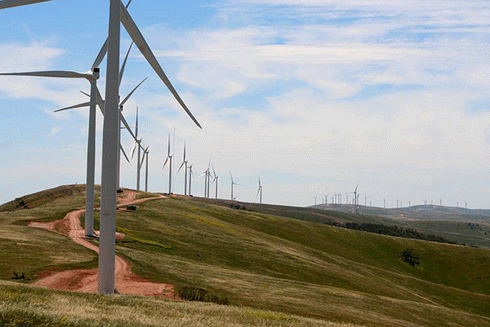
|
Published: 13 May 2014
Wind reduces SA emissions with no added burden to the grid
Large-scale wind energy deployment has helped to dramatically reduce South Australia’s carbon emissions, according to an 8-year study of that state’s electricity sector. The study also found the reductions were achieved without increases in wholesale electricity prices, or the need for additional back-up generating capacity.

|
|
Wind now accounts for 24 per cent of South Australia’s installed capacity and 28 per cent of electricity produced within the state. Credit:
David Clarke under CC BY-NC-ND 2.0 licence
|
‘There is clear evidence that the common complaints made against wind energy are wrong,’ says Roger Price, CEO of wind energy development company, Windlab Systems, which carried out the study.
‘Wind power does not need continual “back-up” and the costs are not onerous.’
The study indicates that in the last 8 years, South Australia has more than quadrupled the amount of electricity generated by wind turbines. Between 2005 and 2013, the amount of wind generation capacity in South Australia grew from 388 MW to 1203 MW.
Wind now accounts for 24 per cent of the state’s installed capacity and 28 per cent of electricity produced within the state. This indicates the capacity factor of wind exceeds that of the system. In 2014, according to the Windlab Systems’ report, wind turbines in South Australia will produce enough electricity to meet the annual electricity demands of every house in the state.
The study shows the growth of wind has seen little, if any, change in South Australia’s wholesale electricity costs, in real terms, compared to prices across the rest of the National Electricity Market (NEM). It also reveals that wholesale electricity prices have not risen, even if the full cost of renewable generation certificates (REC) is included.
Another finding was that there has been no proportional increase in back-up generation capacity.
‘In fact, the state’s reliance on expensive and emission-intensive peaking plants has dropped, as have imports of electricity from Victoria,’ says Price.
‘As a result, CO2 emissions due to electricity generation have plummeted 34 per cent, while electricity usage remained stable.’
Windlab Systems is a global wind energy development company established to commercialise world-leading atmospheric modelling and wind mapping technology developed at CSIRO. Its advanced tools allow Windlab to remotely locate and validate new, highly prospective wind energy sites rapidly and accurately.
Source: Windlab



